The new Lightspeed Delta Zulu is the first premium aviation ANR headset on the market to use UAC connection technology. Now, you’re probably wondering “What the heck is UAC and why does it matter?” If so, you’re in good company. But here’s what UAC does for you and why you should be a little excited about it.
Once upon a time, headphones/headsets were passive little speakers for playing sound in your ears. They plugged into music players or comms systems devices using 3.5mm or similar jacks that could transmit analog sound signal in one direction, from the device to the headset.
Today, both premium headsets and the devices they plug into are computing devices. A computer built into the headset performs Active Noise Reduction, for superior sound and hearing protection. But with 2-way data exchange, the headset and the attached device can work together to provide more than just sound. For example, Lightspeed Zulu headsets can capture incoming and outgoing communications with Lightspeed’s free FlightLink recording app for Apple iPad and iPhone. Our newest headset, the Lightspeed Delta Zulu, also leverages the computing power of the headset and connected device to create a safer flying experience.
The headset works with the Lightspeed App on the mobile device to enable HearingEQity™, which optimizes communications for your hearing acuity, and Kanari™ technology, which monitors and alerts you to hazardous levels of CO. By capturing CO levels in the app, you can also watch for developing problems with your aircraft.
The only hitch is that, for 2-way data exchange, the mobile device and the headset need to use the same type of connection. For example, a headset built to connect to an iPhone with a Lightning connector can’t exchange data via the USB-C connection on an iPad without an additional adapter. The issue is not just that the plugs won’t fit: the different connectors actually transfer data in a different format, so an adapter needs to convert it from one format to another.
Apple’s Ultra Accessory Connector (UAC) standard solves this problem, which is why we built the technology into the Lightspeed Delta Zulu. The UAC connector in a Lightspeed Delta Zulu headset knows how to convert data and signals coming from devices with Lightning, USB-A, or USB-C connectors or 3.5mm jacks. It provides a single point of access for headset charging, data communications, and auxiliary audio.
Usually, with adapters, circuits are involved in routing the signals to the appropriate pins. However, there can be problems when you stack together multiple adapters and the signals do not reach their intended destinations. In our case, the iPhones and most iPads use the Lighting connector, and some iPads use the USB-C. Switching back and forth between a phone call vs. the flight software on the iPad requires you to change. If the adapters work, then all is well; if not, then you are left wondering where the problem lies. Our solution is designed to work without worry.
The Lightspeed Delta Zulu comes with a UAC to USB-A cable, and you can order UAC cables for Lightning, USB-C, or 3.5mm jacks from our website. The Lightspeed Delta Zulu UAC cables let you charge your headset from the Lithium-Ion rechargeable battery pack, listen to music from external devices, and control sound volume from the controls on your device.
The UAC to Lightning does not allow you charge from the attached device. We chose not to enable this feature to protect the mobile device battery from being drained by the headset. In the case of the USB-C; it will charge from an iPad with the USB-C port. However, in this case we have a dip switch that allows the user to control if the headset can charge or not.
But most importantly, UAC enables your device and the Lightspeed Delta Zulu to work together to keep you safer in the air. Now, aren’t you just a little bit excited?















Leave a Comment